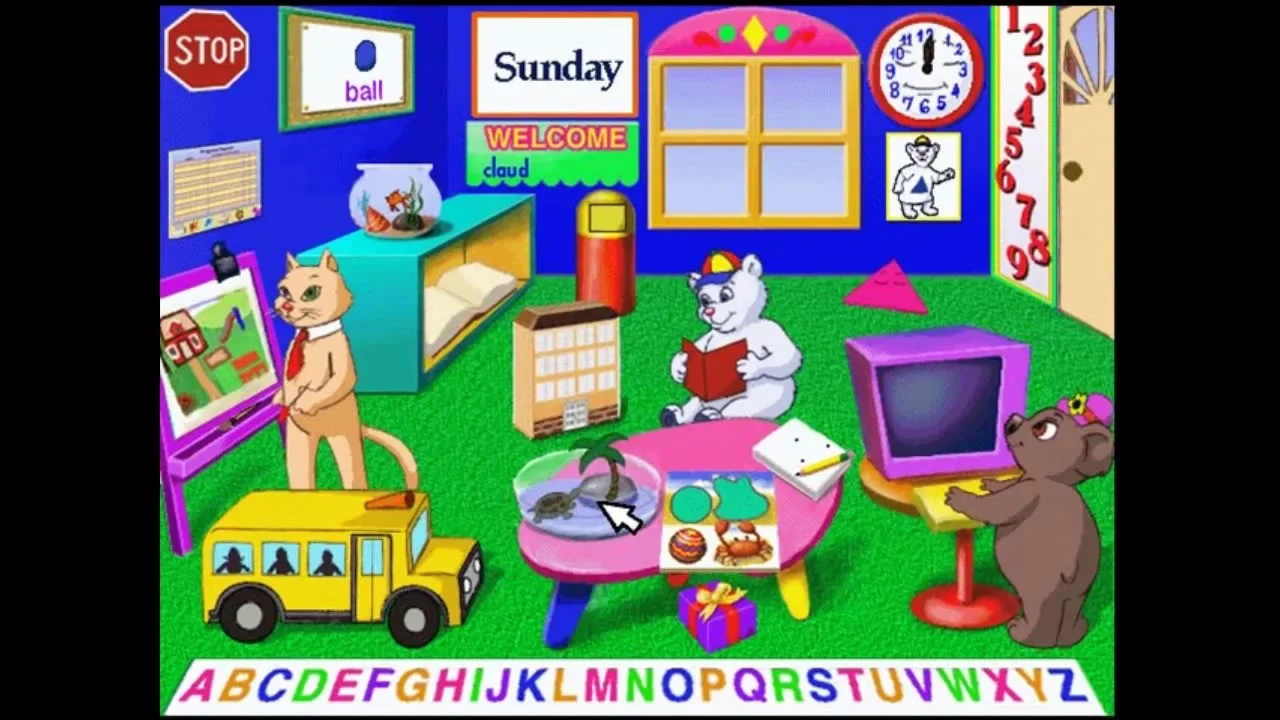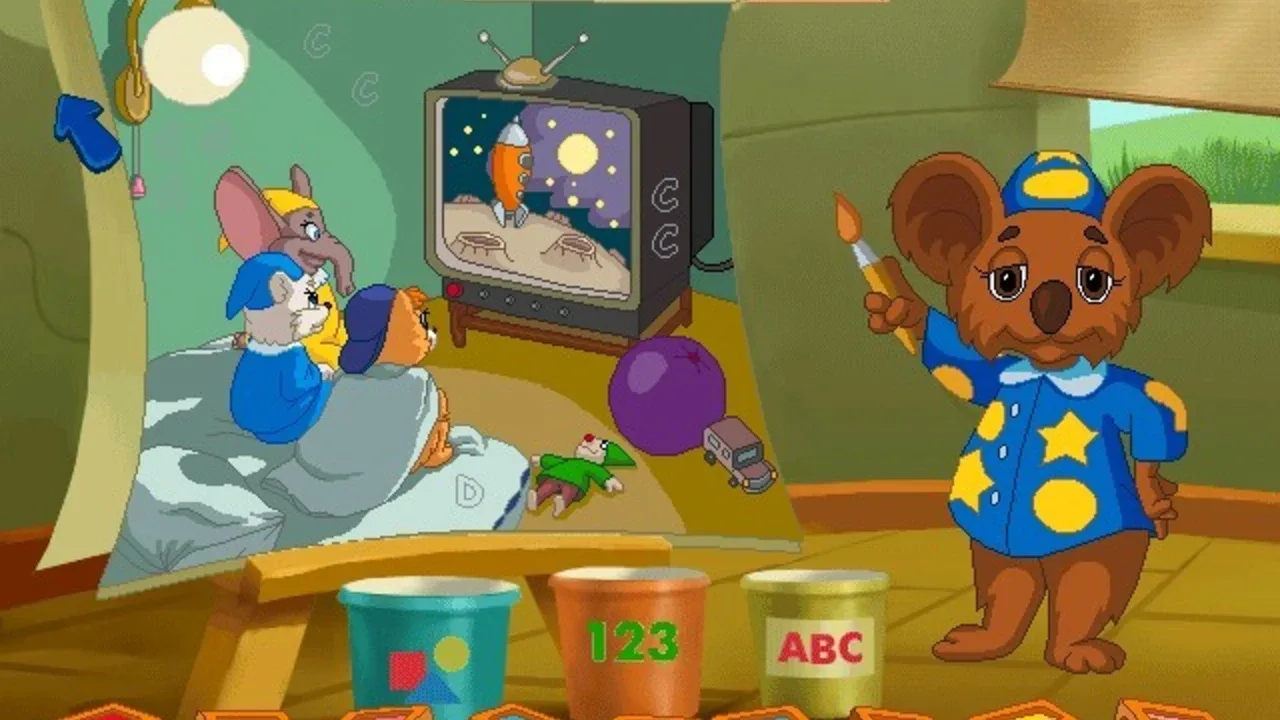JumpStart Preschool
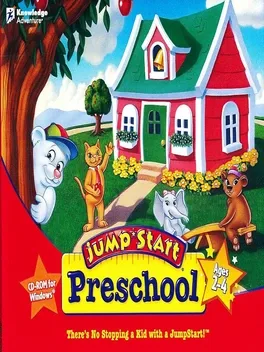
Buy
Part of collection:
JumpStart
(last 3 games)
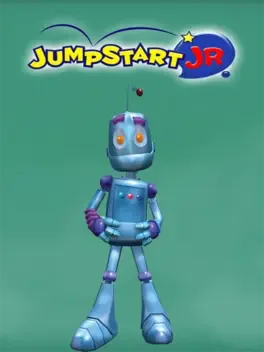
JumpStart Junior (also styled as JumpStart Jr.) is intended to teach various subjects to children ages 3-5.
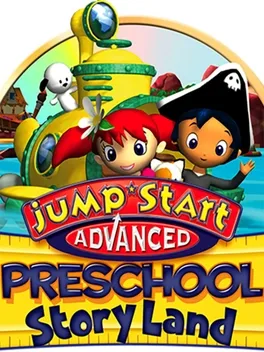
JumpStart Advanced Preschool Storyland is a PC game released in 2011. It is designed to teach language arts concepts at a preschool level.
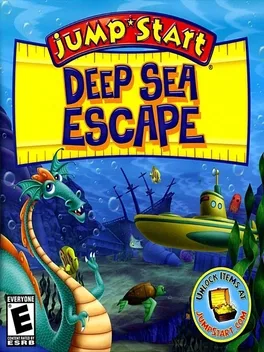
JumpStart Deep Sea Escape is a game for the Nintendo DS released in 2011. It teaches various concepts mainly for ages 5-8. In this game, players explore an underwater world to rescue a stranded submarine. Along the way, players must collect oxygen tanks, solve puzzles, and defeat water monsters.
Part of franchise:
JumpStart
(last 3 games)

JumpStart Junior (also styled as JumpStart Jr.) is intended to teach various subjects to children ages 3-5.

JumpStart Advanced Preschool Storyland is a PC game released in 2011. It is designed to teach language arts concepts at a preschool level.

JumpStart Deep Sea Escape is a game for the Nintendo DS released in 2011. It teaches various concepts mainly for ages 5-8. In this game, players explore an underwater world to rescue a stranded submarine. Along the way, players must collect oxygen tanks, solve puzzles, and defeat water monsters.
Could be interesting
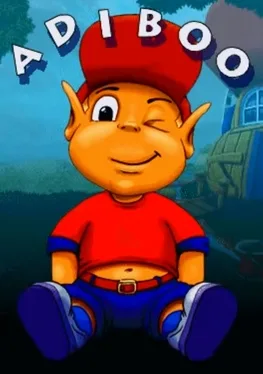
This game came out in 1996, helping children growing up as the main character, Adiboo, interacts with us in various mini-games, sometimes fighting the mean monster-blob, and most times teaching children reading, singing, and many life values.
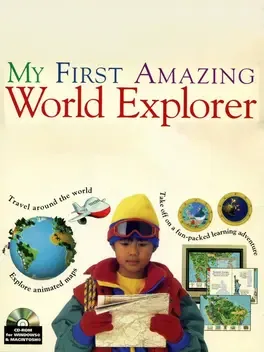
My First Amazing World Explorer is an educational travel game, developed and published by DK Multimedia. It functions both as a virtual atlas and as an exploration tool. The player travels the world, collecting stamps from every country visited, whilst learning about different nations.
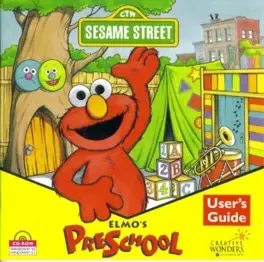
An educational computer game in which Elmo hosts a handful of minigames meant to teach children about the basics of numbers, letters, shapes, facial expressions, and music.
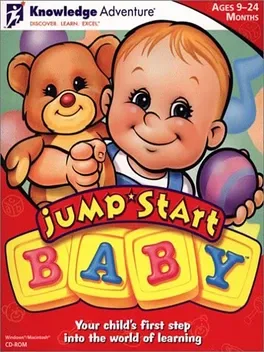
JumpStart Baby is a game released by Knowledge Adventure in 1998. It focuses on learning concepts for ages 9-24 months. It was later succeeded by JumpStart Baby (2000). In this game, the player engages in eight different activities around a house with a stuffed bear named Teddy.

JumpStart Junior (also styled as JumpStart Jr.) is intended to teach various subjects to children ages 3-5.

Danish point-and-click adventure game with some edutainment content. The first game in Skipper and Skeeto -franchise. A witch has stolen the good fairy's magic wand and Skipper and Skeeto must help get it back. The game is set in a park where the player helps various animals in order to move forward in the story. Game features minigames with some educational content, for example locating countries on a map or telling the time.
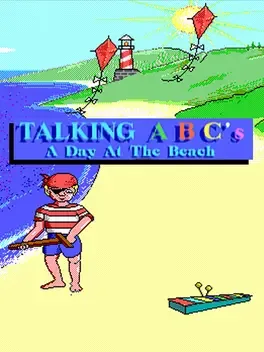
Talking ABC's: A Trip To The Beach is an early spelling game for children 2 to 6 years old. The game uses software called TurboSound to produce voice through the PC speaker, while the vast majority of games required a soundcard. There are three modes of play. In the first mode, the game announces a letter, which the player must find on the keyboard, and then an object that starts with that later is introduced and drawn onto the screen. In the second mode, the player can press any letter and the corresponding object is drawn to the screen, which the player can move wherever they want. In the third mode, three letters and three objects are displayed, and the player must draw a line between the letters and objects to make them match. Registered users received a copy of the game which displayed their child's name, and could request a CGA optimized version which was much faster for CGA users. Additionally, they were promised a free game. Later versions promised a copy of Millions of Mazes, which may or may not have been the original free game.
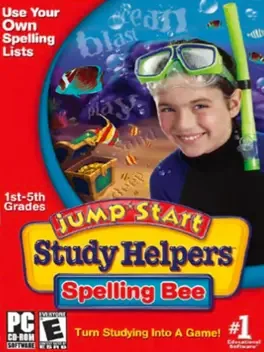
JumpStart Study Helpers: Spelling Bee is a JumpStart game released in 2003. It is geared to 1st - 5th Grades and intended to assist in practicing spelling. It is a sister game to JumpStart Study Helpers Math Booster, and both were packaged together in a bundle called JumpStart Advanced Study Helpers in 2007. The game may be played in both English and Spanish.
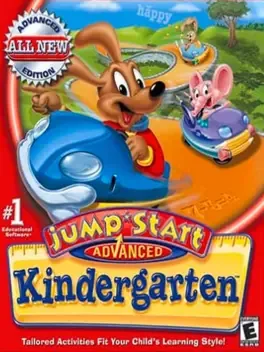
JumpStart Advanced Kindergarten is a game originally released in 2002 as JumpStart Advanced Kindergarten. It is intended to cover various essential kindergarten skills.
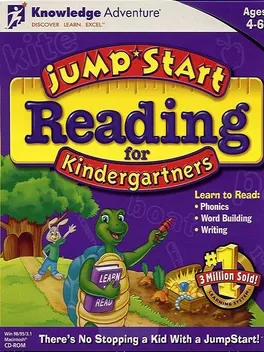
JumpStart Kindergarten Reading is an educational title aimed at four to seven year olds. The game features a Rabbit called Hopsalot. He's on holiday from school and wants to find the treasure buried in his carrot patch. He has six relatives each of which has a clue so, with the help of the pupil, off he goes. Each visit is in two parts, for example visiting Granny in the frozen north starts with a request to click on all the items beginning with a specific letter to defrost them. There's usually around half a dozen items on the ground of which four match the specified criteria. Once this task has been completed the pupil goes to an ice hockey practice session. Here a letter is shown on the scoreboard and hockey pucks with three and four letter words are slid over the ice. If the initial letter of the word matches the target letter the pupil clicks on the puck and, if they're right, it's fired into the net. If the initial letter does not match the target letter they click on the referee and the puck melts away. After completing the mini games the player is shown a clue to the carrot patch treasure, this specifies a letter. The player is then taken to the carrot patch where they must identify the letter from those shown, they click on it, a tunnel is dug to that spot where there will be an object and a small animation. Different games stress different reading elements. Alfie the Jazz Hamster asks the pupil to choose words that rhyme, Grandad gets the pupil to match upper and lower case letters, Flash asks the pupil to spell/complete words that come from a volcano while Robbie at the ranch expects pupils to decide whether a word is real of not.



